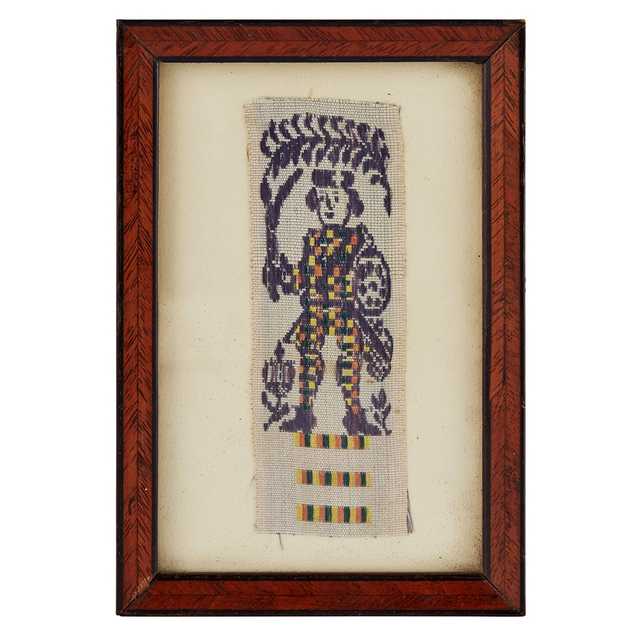
Studio Of Antonio David (Italian, 1698–1750), “Prince Charles Edward Stuart,” oil on canvas, and “Prince Henry,” oil on canvas, 24¼ by 18½ inches, sold for $33,500.
Review by W.A. Demers, Photos Courtesy of Lyon & Turnbull
EDINBURGH, SCOTLAND — An annual specialist sale by Lyon & Turnbull — the Scottish silver and applied arts auction — brings out the best in Scottish art, and the firm’s August 17 edition was no exception. Crossing the podium were choice examples of three centuries of works designed and created in Scotland. The lineup included silver, Wemyss ware and pottery, glass, fine art, decorative arts, arms and armor, furniture and textiles.

Showing a tantalizing relationship between Scotland and Russia in the late Eighteenth Century and of Russian imperial interest was this George III carved coconut cup and cover by Alexander Gairdner, Edinburgh, 1791, its body carved with portrait busts of Catherine the Great, Empress Elizabeth and Tsarevich Peter. It finished at $13,000.
The 340 or so lots up for bid were led by an interesting pair of portraits depicting the Princes Charles and Henry during their teenage years. They were by the Studio of Antonio David (Italian, 1698–1750) and sold for $33,500. Catalog notes explain that David had been painting for the Stuart court for many years, and his work included creating childhood likenesses of the boys. This slightly later pair, although very similar to the childhood portraits, present the princes in more mature apparel, with Henry sporting a breast plate under his elaborate jacket and Charles in full armor, possibly in reference to his first military experience, witnessing the siege of Gaeta in 1734. They were the last portraits painted by David for the Stuarts.
A Jacobite enamel patch box from the Eighteenth Century realized $16,800. The round box featured a deep blue enamel ground with gilt-brass mount and hinged cover, the base of the interior zinc lined, the lid of black ground with oval applied portrait of Prince Charles Edward Stuart within gold border. Accompanying the box was a note stating, “‘This box was presented by Prince Charles Edward to Captain John Burnett of the R.H. Arty.”
A Wemyss ware highlight was a small and rare pig decorated in the “Apples” pattern, circa 1900, impressed with the Wemyss mark. It nearly doubled its high estimate to achieve $14,000. Wemyss ware items are the quintessential made-in-Scotland product, with a long and distinguished history from its beginning in 1882 when pottery owner Robert Heron Karel Nekola, a gifted decorator whom he had brought over from Bohemia, launched the line. Probably the most highly collectible and sought-after Scottish pottery, it features all kinds of cats, pigs, other animals and giftware.
Three additional Wemyss ware lots figured within the sale’s top ten lots. Fetching $11,000 was an even more fancifully painted pig, circa 1890, decorated with dabs of green, blue and ochre. A large Wemyss ware tabby cat, circa 1900, wearing a Cheshire-cat-like smile, had some restoration to a leg and ears and went out at $8,000, while a scarce Wemyss ware honey pot and cover, circa 1900, formed in the shape of a bee skep and decorated by Edwin Sandland with flying bees, also took $8,000.
Rounding out the sale’s other notable lots were a pair of steel and silver inlaid belt pistols by Alexander Campbell of Doune, Eighteenth Century, at $14,000; and of Russian imperial interest, a George III carved coconut cup and cover by Alexander Gairdner, Edinburgh, 1791, its body carved with portrait busts of Catherine the Great, Empress Elizabeth and Tsarevich Peter, which trounced its high estimate nearly fivefold to finish at $13,000. According to catalog notes, the cup shows a tantalizing relationship between Scotland and Russia in the late Eighteenth Century, much closer than many realize, with strong trading routes long established and successful business for Scottish merchants.
A framed section of a Jacobite ribbon, mid-Eighteenth Century, featured a woven figure of a Highlander (likely representing Bonnie Prince Charlie) in harlequin dress with sword and targe. It was bid to $7,000.
Highlighting the silver on offer, a rare Scottish provincial teaspoon by Alexander Glenny in the Fiddle pattern with chamfered stem, the terminal engraved with conjoined script initials JMF, sold for $7,000.
Prices reported have been converted from British pounds sterling to US dollars at press time and include the buyer’s premium.
For additional information, www.lyonandturnbull.com or +44 1315578844.











